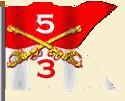


Notice: This is the official website of the All Empires History Community (Reg. 10 Feb 2002)
Bogovo Gumno - God's threshing floor |
Post Reply 
|
| Author | |
dublin 
Janissary 
Joined: 04-Mar-2014 Online Status: Offline Posts: 24 |
 Quote Quote  Reply Reply
 Topic: Bogovo Gumno - God's threshing floor Topic: Bogovo Gumno - God's threshing floorPosted: 15-Aug-2014 at 11:49 |
|
On mountain Devica we have a Sun circle called Bogovo Gumno, which was
built for determining the day of the summer solstice. So what? We have
these types of circles all over Europe. Why is this one so significant?
The answer to this quesiton is: because of its name and what its name
means.
The meaning of the name "Bogovo Gumno" means God's Threshing floor.There is a local legend which says that the Circle is called God's Threshing floor because in the ancient times god came from heaven with his horses and he threshed grain there. This directly links Sun circles with Sun worship and grain agriculture. In 1950, Serbian ethnographer Nenad Janković published a book on folk astronomy called "Astronomija u predanjima, obicajima i umotvorinama Srba" (Astronomy in legends, customs and oral and written tradition of the Serbs). In it he expressed his great surprise at the ability of ordinary illiterate peasants to tell exact date and time without calendars and clocks. Professor Jankovic states that one of the main instruments used for these calendar and time calculations was the threshing floor. By looking at the shadow cast by the stožer, the central pole at sunrise, they were able to tell the date. And by looking at the shadow cast by the stožer, the central pole during the day they were able to tell the time. Threshing floor is a universal solar observatory, which at the same time can tell the date and the time. Were the original henges threshing floors as well as a sun circles, solar observatories? The threshing process is the final part of the harvest. It is the moment when the months of hard work finally turn into food. This is the moment when the people will find out whether they will feast or whether they will starve through the winter. But it is not just the months of hard work that were put into producing the grain that is being threshed at the threshing floor. These months were also months of prayers to the Sun, the god of Grain. First there were spring prayers to the young god of Grain Jarilo. These prayers were performed during plowing and sawing season, to insure that the grain sprouts. The prayers were asking the young god of fertility to help insure that the land gets impregnated with the wheat seeds and that the wheat sprouts. Second there were prayers to the mature god of Grain Vid. These prayers were performed during the growing of the grain, when sun is needed to grow the wheat seeds and fill them with goodness. Third there were prayers to the old god of Thunder and Rain, Perun, Ilios. These prayers were performed during the ripening of the grain just before the harvest, when light rain is needed to ensure that the wheat is not destroyed by the drought. But all these three gods are just three faces, three ages of one god, the god of grain, Dabog, the God that gives also known as Hromi Daba, Triglav, Thundering sun Ilios. The threshing time is the time of truth. All the wheat is gathered on the threshing floor and the final, most important prayer to the god of Grain is uttered during the threshing process: "Please god give us enough grain so that we can survive through the winter". The threshing floor becomes the place where every year the relationship between the people and their god is being tested. If the harvest was bountiful, the god heard our prayers and has delivered. If the harvest was poor, the god did not hear our prayers or heard them and decided to ignore them. Why? What did we do wrong? What if we didn't do anything wrong, what if we were praying to the wrong god? Were threshing floors, sun circles, the first temples dedicated to the Sun, the god of grain farmers? You can read more here Edited by dublin - 15-Aug-2014 at 15:17 |
|
 |
|
Centrix Vigilis 
Emperor 

Joined: 18-Aug-2006 Location: The Llano Online Status: Offline Posts: 7392 |
 Quote Quote  Reply Reply
 Posted: 15-Aug-2014 at 20:24 Posted: 15-Aug-2014 at 20:24 |
''Were the original henges threshing floors as well as a sun circles, solar observatories?'' ''Were threshing floors, sun circles, the first temples dedicated to the Sun, the god of grain farmers?'' To the first: sounds reasonable. For the second: For that region possibly. Interesting stuff. CV |
|
|
"Absence of evidence is not evidence of absence"
S. T. Friedman Pilger's law: 'If it's been officially denied, then it's probably true' |
|
 |
|
Post Reply 
|
| Forum Jump | Forum Permissions  You cannot post new topics in this forum You cannot reply to topics in this forum You cannot delete your posts in this forum You cannot edit your posts in this forum You cannot create polls in this forum You cannot vote in polls in this forum |
Bulletin Board Software by Web Wiz Forums® version 9.56a [Free Express Edition]
Copyright ©2001-2009 Web Wiz
This page was generated in 0.077 seconds.
Copyright ©2001-2009 Web Wiz
This page was generated in 0.077 seconds.











 Printable Version
Printable Version Google
Google Delicious
Delicious Digg
Digg StumbleUpon
StumbleUpon Windows Live
Windows Live Yahoo Bookmarks
Yahoo Bookmarks reddit
reddit Facebook
Facebook MySpace
MySpace Newsvine
Newsvine Furl
Furl Topic Options
Topic Options